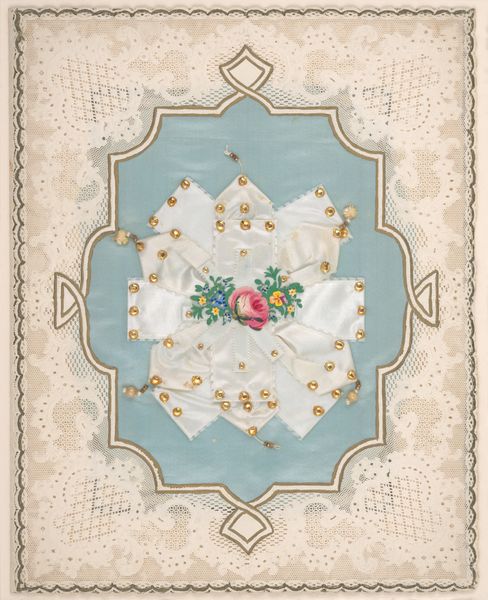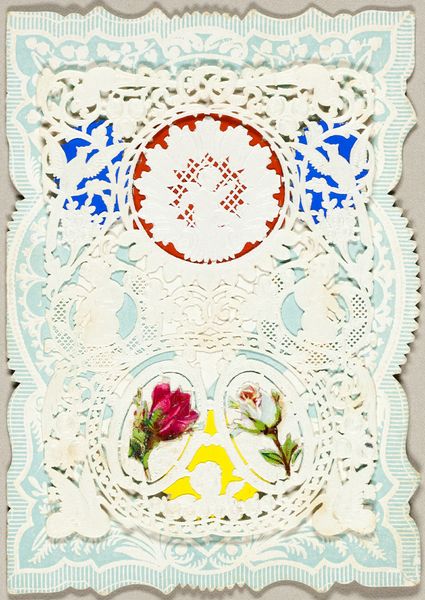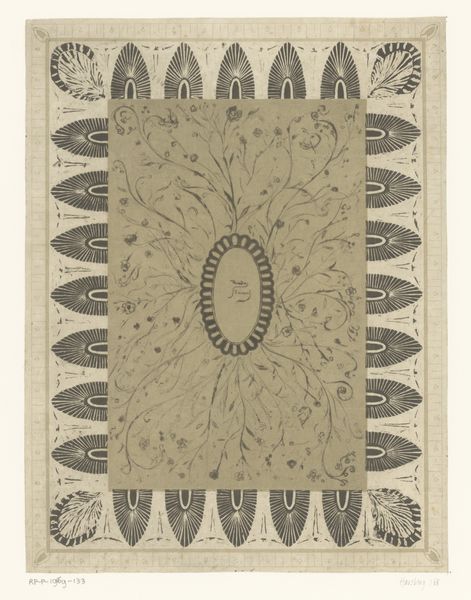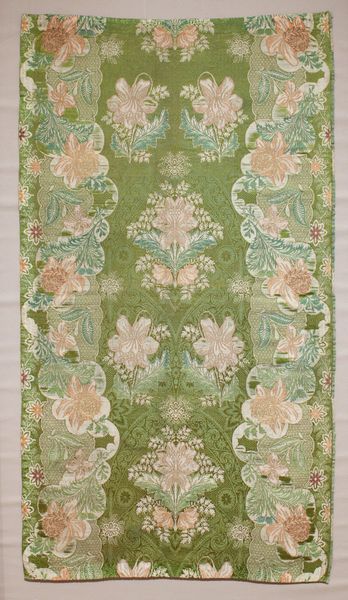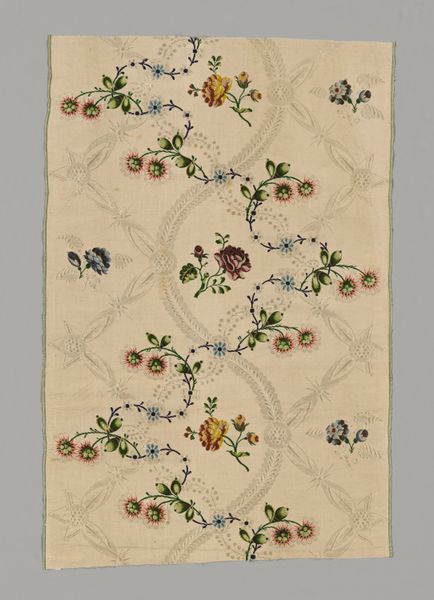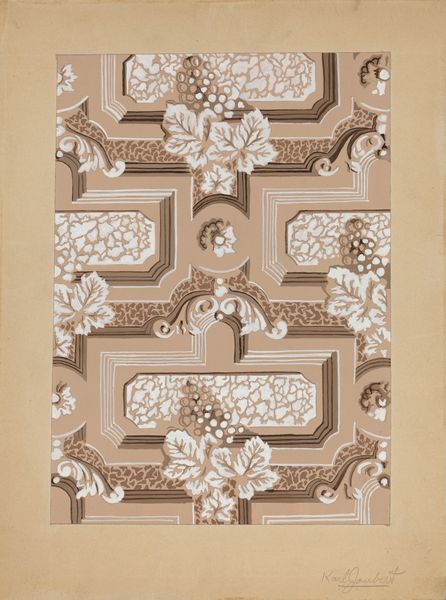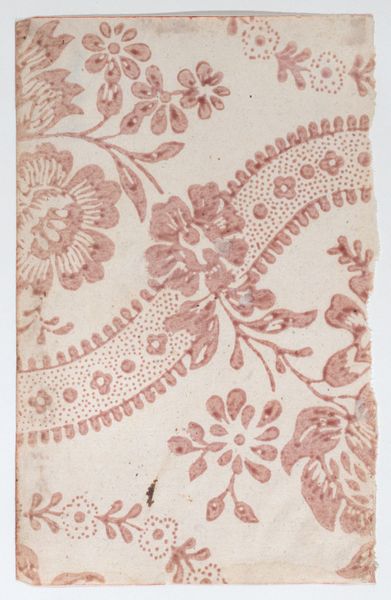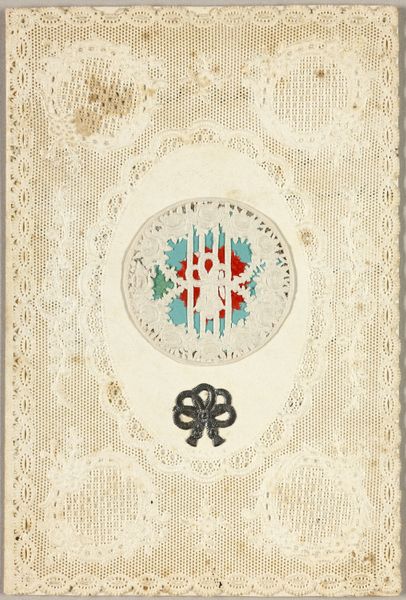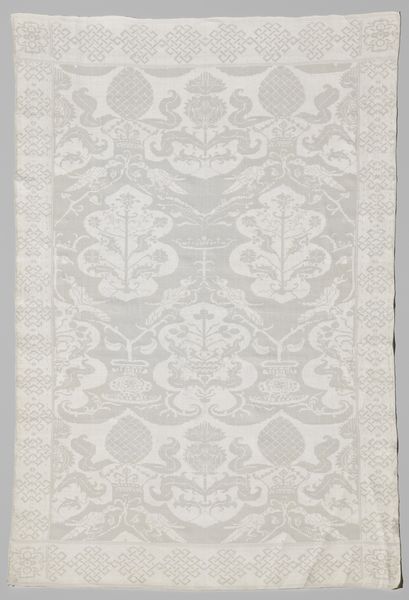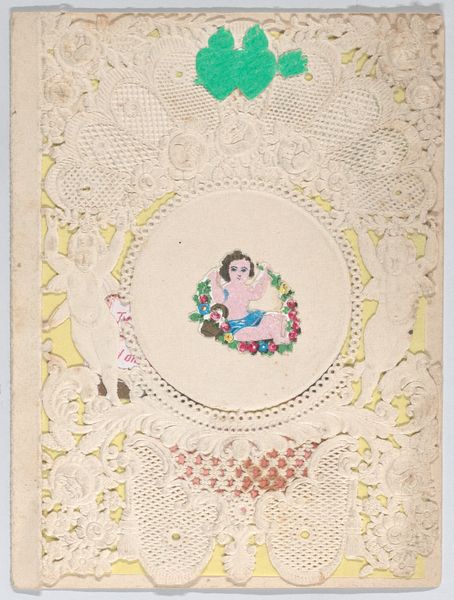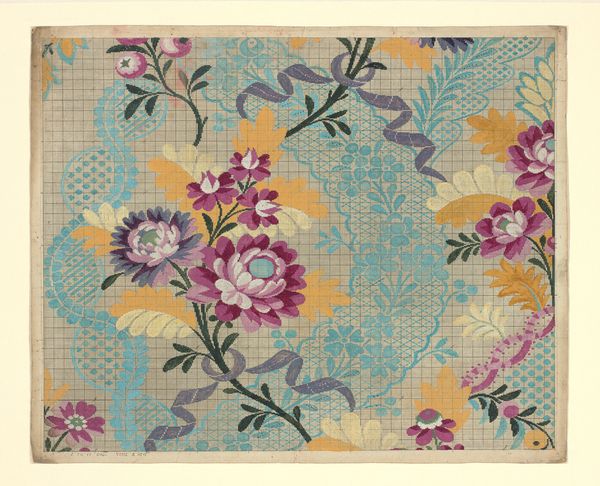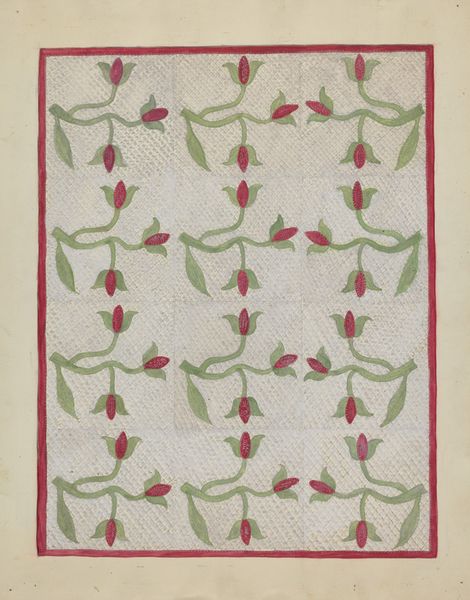
drawing, print, paper
#
drawing
# print
#
paper
#
pattern background
#
organic pattern
#
england
#
romanticism
#
flower pattern
#
decorative-art
#
miniature
Dimensions: 195 × 124 mm (folded sheet)
Copyright: Public Domain
Editor: This lovely miniature artwork, "Don't Forget Me (valentine)," by Joseph Mansell, dates back to the mid-19th century and uses drawing and print on paper. It’s so delicate and detailed; it makes me wonder about the process involved. What can you tell me about how this piece was made and what that reveals about its context? Curator: Look closely at the paper and printmaking techniques. Consider the labor involved in creating such intricate patterns, the industrial processes that could have played a role, and the social context that would make such items desirable. This wasn't just about individual artistic expression; it was deeply enmeshed with material production. Editor: So, it’s less about romantic sentimentality and more about the mechanics of Victorian-era production? Curator: Precisely. How would the material qualities – the paper, ink, and techniques used – affect its perceived value? And how did the industrial production of these materials influence their accessibility and, thus, their use in expressions of affection? Valentine's cards became ubiquitous as these prints become affordable, shifting it from a luxury for the elite into popular expression of love for anyone. Editor: I never considered the social impact of accessible printmaking materials. Did this kind of accessible design empower any particular group of people, such as women? Curator: Excellent question. Who was producing these miniature objects, and under what conditions? Factory workers, many of whom were women and children, mass-produced these items. These materials allow an increasingly powerful middle class to communicate love through material and create and establish this mass-produced Valentine object as the social norm. Editor: That gives me a whole new perspective. Thanks to how materials and methods shape it, this miniature paper transforms into an object with real weight. Curator: Absolutely. By exploring materiality and social production, we unveil richer layers of significance, turning something seemingly sentimental into a revealing window onto Victorian society.
Comments
No comments
Be the first to comment and join the conversation on the ultimate creative platform.
